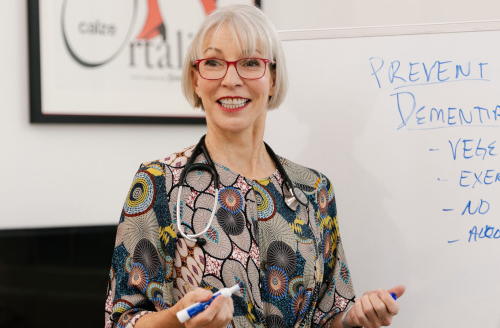As I do geriatric house calls around the San Francisco Bay Area, I am asked this question all the time. Like many areas in geriatrics, the expected life span of a patient is often quite difficult to pinpoint. This is a huge reason why there’s a growing trend for patients to be bounced from hospice care.
I’ve been a hospice medical director, and I’ve worked through the formulas, the algorithms, for admitting a patient to hospice, or not doing so. As medical professionals, we do our best. But I’ve seen it again and again:
• An elder may be seem to be at death’s door. Then, inexplicably, that elder will rally and hang on to life for months more.
• Or, conversely, a patient may be declining, and then suddenly take a turn for the worse and die.
It’s so difficult to assign probabilities to individual cases. For instance, a patient with advanced dementia has a 25 percent higher risk of dying from pneumonia than another elderly patient. But what if the patient in front of me never gets pneumonia?
I understand that hospice facilities need to be reserved for the patients that most need them. That’s why each hospice case needs to be recertified every 60 to 90 days. Sometimes, a patient may be clearly be on a long downslide toward death, and yet not be expected to die within the next six months (the standard required for admission to hospice).
I think the most important thing to remember—whether the timeline is 9 months or 9 days—is that we make sure we are protecting elderly patients from procedures or treatments that will be painful and distressing, but have little chance of prolonging life.
In my practice, this means:
• I do everything I can to keep my declining patients out of the emergency room and the hospital. Patients in what probably will be their last year of life seldom win any extra days by running off to the hospital. Many, many procedures can now be done at home: blood tests, x-rays even dental care. Staying in place is more reassuring for elders, especially those that suffer from dementia.
• I always weigh whether the distress of a procedure is outweighed by the benefit. For instance, if a declining elder falls and may have a fracture, I would generally recommend that an x-ray be done. When a patient is dying, our primary goal should be the patient’s comfort. No one should have to endure the pain of a broken bone, even someone who’s dying.
So these are the questions to ask:
- Will the procedure really prolong life?
- Could the procedure be done without moving the patient from their residence?
- Will the procedure maximize comfort and peace of mind?
Of course, other physicians may have different ways to judge whether hospice, or a particular procedure, is warranted. What do you think? Are there other things we physicians should take into account?

Elizabeth (Dr Liz) has over twenty years of experience in providing medical care to the elders. She is board-certified in Internal Medicine, Geriatric Medicine and Palliative Care Medicine. Dr Landsverk founded ElderConsult Geriatric Medicine, a house calls practice, to address the challenging medical and behavioral issues often facing older patients and their families.

